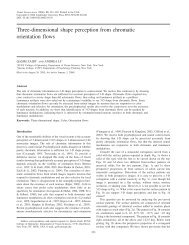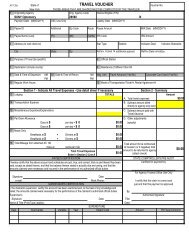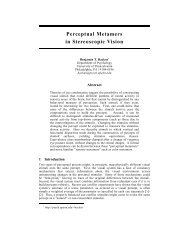Procurement Guidelines - New York State Office of General Services
Procurement Guidelines - New York State Office of General Services
Procurement Guidelines - New York State Office of General Services
You also want an ePaper? Increase the reach of your titles
YUMPU automatically turns print PDFs into web optimized ePapers that Google loves.
• Price;• Delivery terms;• Description <strong>of</strong> the commodity or service being procured;• Payment terms;• Duration <strong>of</strong> the contract; and• Liability clauses and any other requirements <strong>of</strong> either the buyer or seller.Contracts may be issued by the OGS on behalf <strong>of</strong> all agencies or may be issued by oneor more agencies for their unique needs. The following provides a general description <strong>of</strong>various types <strong>of</strong> contracts used by state agencies:OGS Centralized ContractsOGS creates centralized contracts for commodities or services. There are more than2,500 such contracts in place. Once these contracts are established and approved, agenciesmay purchase from them. For the purchase <strong>of</strong> commodities or services available from an OGScontract (for example, a P-contract, PC-contract, PS-contract or PT-contract), the agency mayissue a purchase order directly to the contractor without prior approval by the <strong>Office</strong> <strong>of</strong> the<strong>State</strong> Comptroller (OSC). Agencies are encouraged to attempt to negotiate more favorableprices.The <strong>State</strong> Finance Law requires that agencies use an OGS centralized contract (i.e., aP-contract or PC-contract) to purchase commodities that meet the agency’s requirements withrespect to form, function and utility. Agencies are encouraged but not required to use an OGScentralized contract (e.g., CMS-contract, PT-contract, etc.) to purchase services or technology.OGS or LessIn addition, pursuant to <strong>State</strong> Finance Law § 163(3((a)(v), OGS centralized commoditiescontracts that contain a clause known as “OGS or Less” may allow an agency to obtain neededcommodities from a non-contract vendor in order to take advantage <strong>of</strong> non-contract savings thatmay develop in the marketplace. “OGS or Less” purchases may not be made if thecommodities are available from:• Legally established preferred sources in the form, function and utility required;• <strong>State</strong> contracts based on filed requirements (e.g., fuel, oil, etc.); or• Agency-specific contracts.After determining that the needed commodity cannot be obtained from these sources,the agency must determine, and document in the procurement record, that the purchase price,including delivery, warranty and other relevant terms, <strong>of</strong>fered by the non-contract vendor ismore economically beneficial than what is <strong>of</strong>fered on OGS centralized contract(s) for acommodity substantially similar in function, form and utility. Agencies must not solicit multiple<strong>of</strong>fers from the same vendor and must not create a bidding war. <strong>State</strong> contractors must be<strong>New</strong> <strong>York</strong> <strong>State</strong> <strong>Procurement</strong> <strong>Guidelines</strong> 7
















